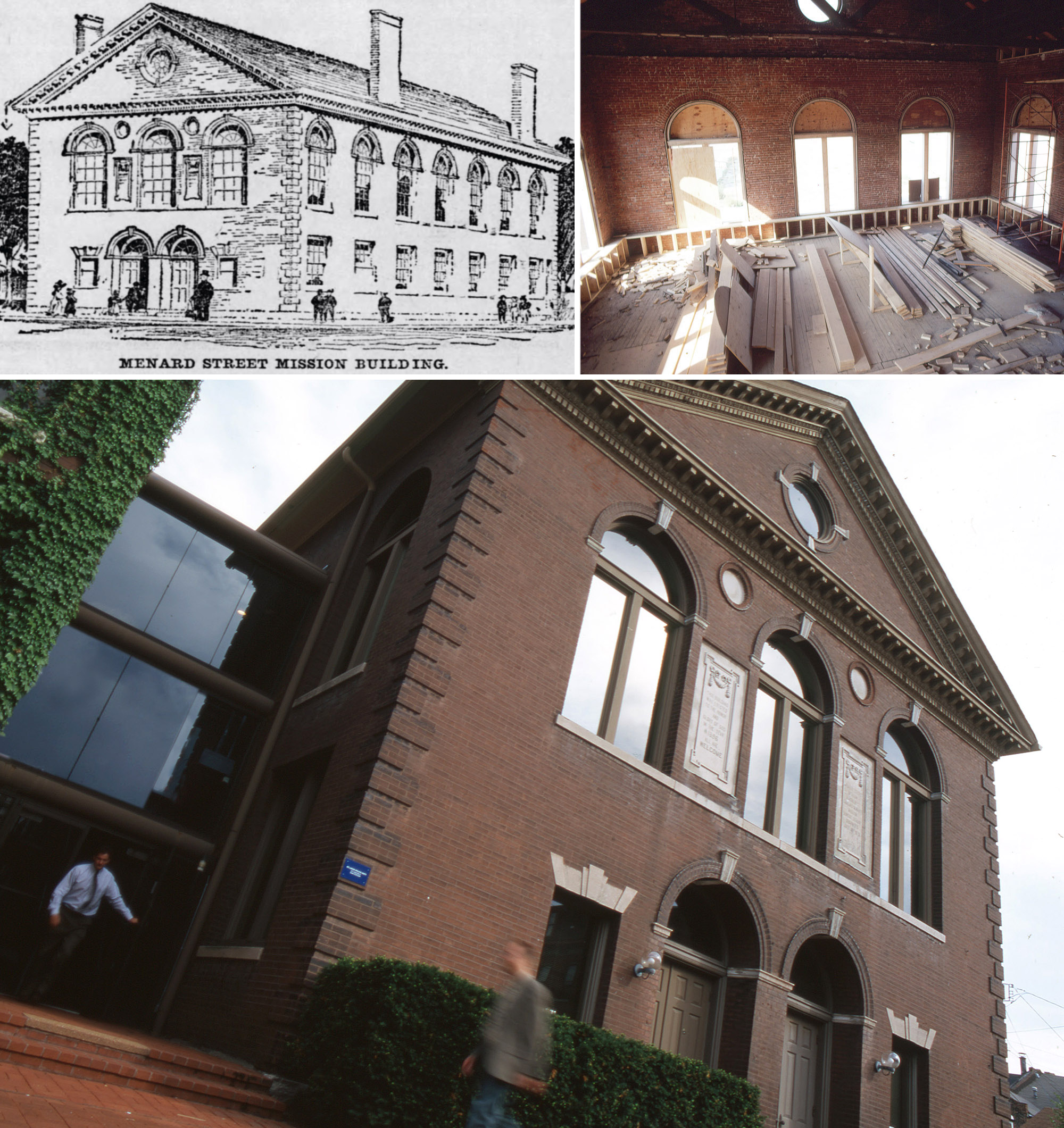Although our office space and exact locations have changed over the years, Obata has been proud to call St. Louis home for more than seven decades.
Our company’s creative legacy includes occupying office space at some of the most historic buildings in the city. In fact, in our company’s earliest days, we resided on a paddlewheel boat on the Mississippi River before the Arch was even built.
We’ve come a long way from those early years, yet our loyalty to St. Louis has remained consistent. And for the last four decades, our office has been a part of the historic Soulard neighborhood just a few miles south of downtown. Read more about our long, proud creative history.
A journey covering eight locations for more than 70 years
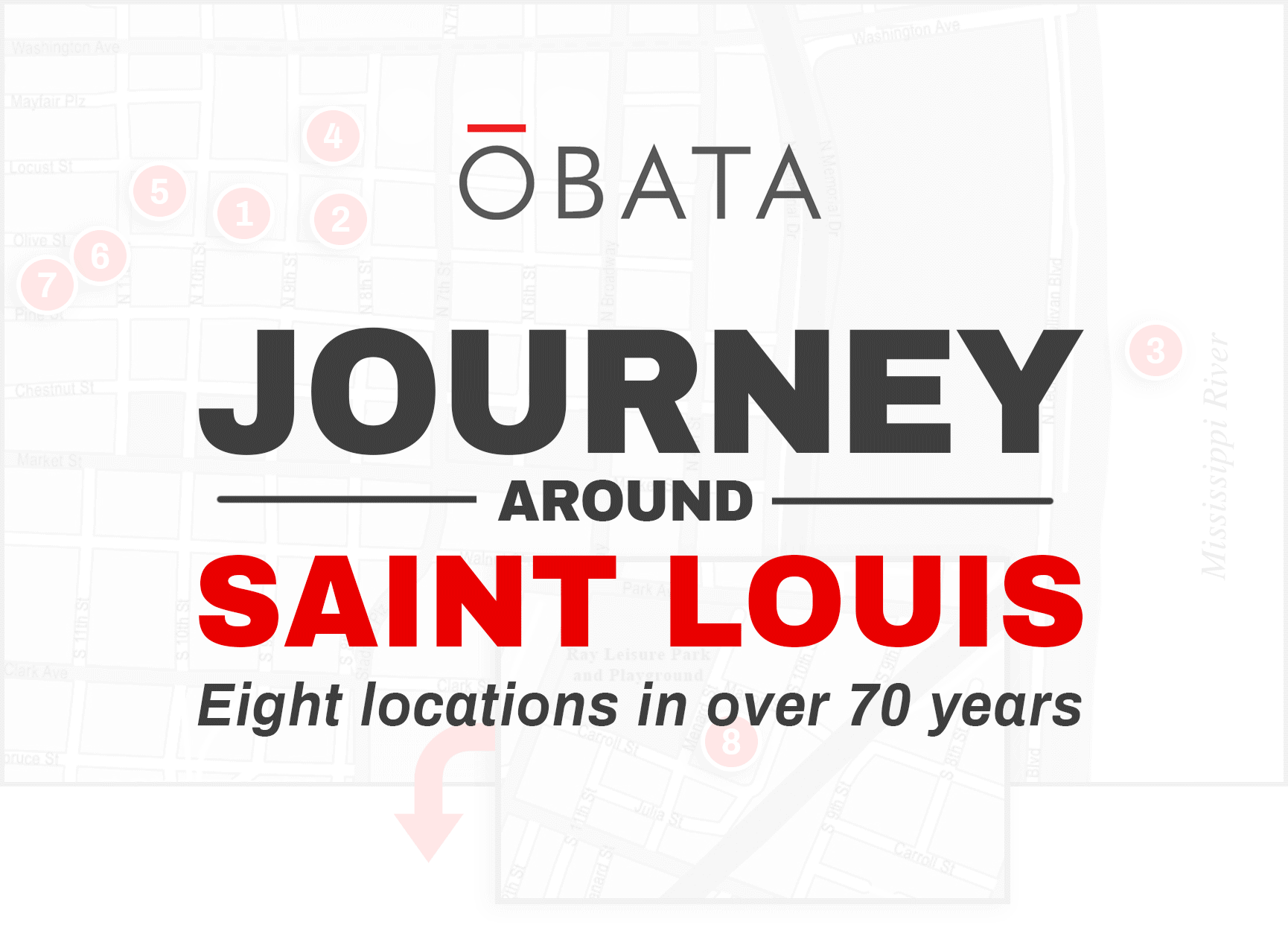
1. 1946–1948
In late 1945, Obata co-founder Alice Hausner quit her job at a display firm and rented a one-room office in the Syndicate Trust building at 915 Olive Street. The building was known locally for its major tenant, the Scruggs-Vandervoort-Barney department store. Gardner Advertising, one of Obata’s first and largest clients, occupied the 13th and 14th floors, and was known for having the first air-conditioned offices in the building. Alice’s business was booming. “After two months alone and more work than I could handle, my sister joined me…and Kimio Obata, who worked at the display company, came down to help”.
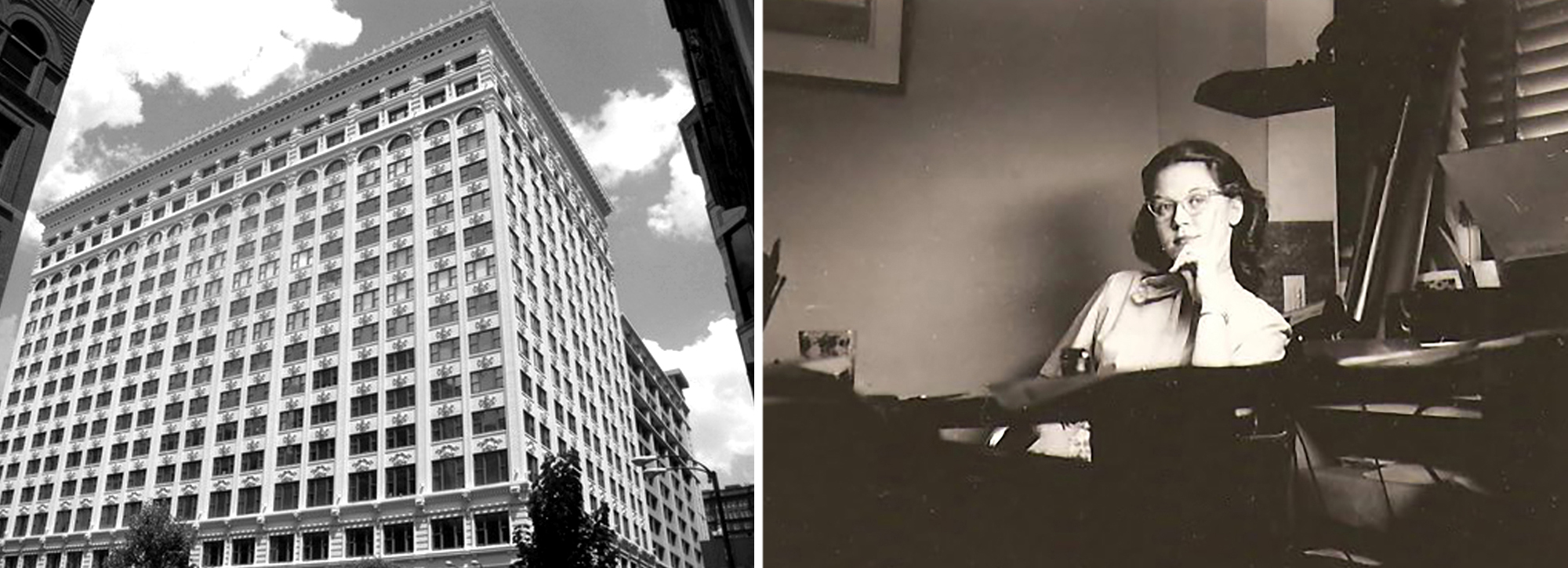
2. 1948–1949
In mid-1948, Alice and Kimio were sharing a one-room office in the glamorous Arcade building. The second and third floors of the building contained a multi-story atrium and thriving shopping arcade. The location was only two blocks from Gardner Advertising, so shuttling projects and maintaining tight relationships with Obata’s largest client was not difficult. The Arcade building is on the National Registry of Historic Places.
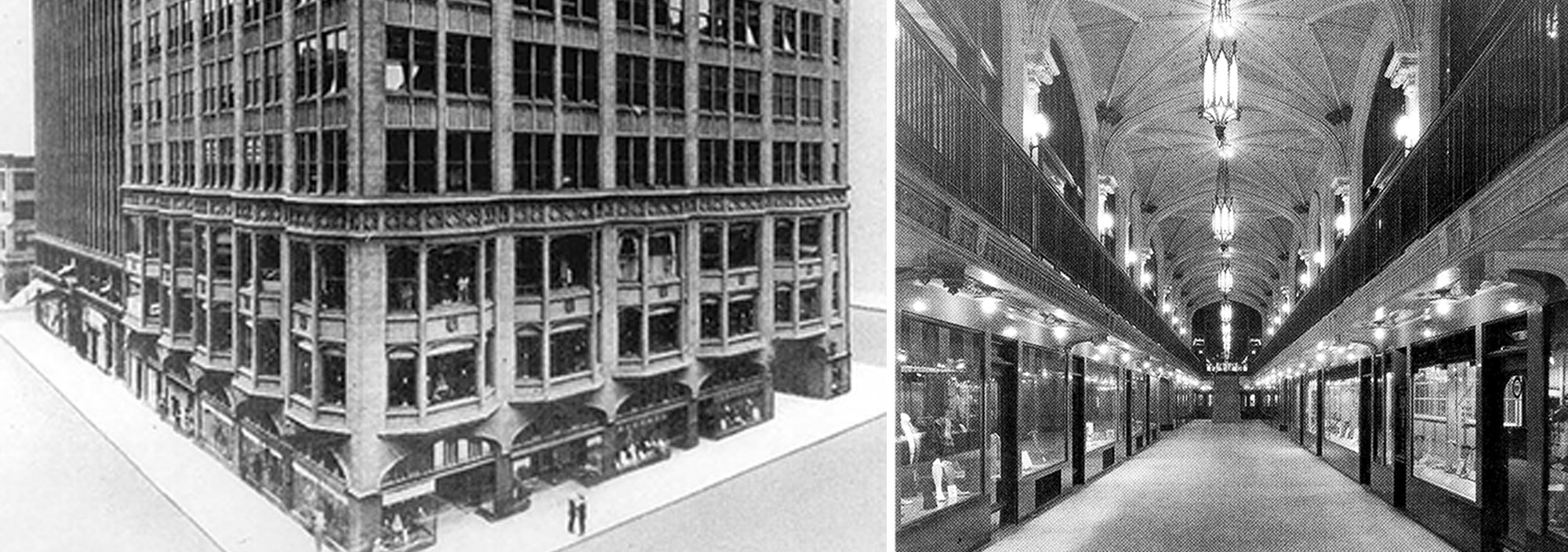
3. 1949–1952
By 1949, Alice Hausner and Kimio Obata had relocated their business to a paddlewheel boat “at the foot of Pine Street”, sharing offices with the Cassell, Watkins, Stevens advertising art firm. Rich Haley, also working on the boat, soon joined Obata. Life on board was anything but typical. Alice talked about having to pause work on watercolor illustrations to let waves settle down after barges passed. She also complained of high winds catching portfolio cases on the gangway. For entertainment, Kimio Obata offered fencing lessons on deck between projects. The location itself was somewhat remote, since the adjacent riverfront at that time consisted of 39 blocks of cleared land and parking lots awaiting future Arch construction.
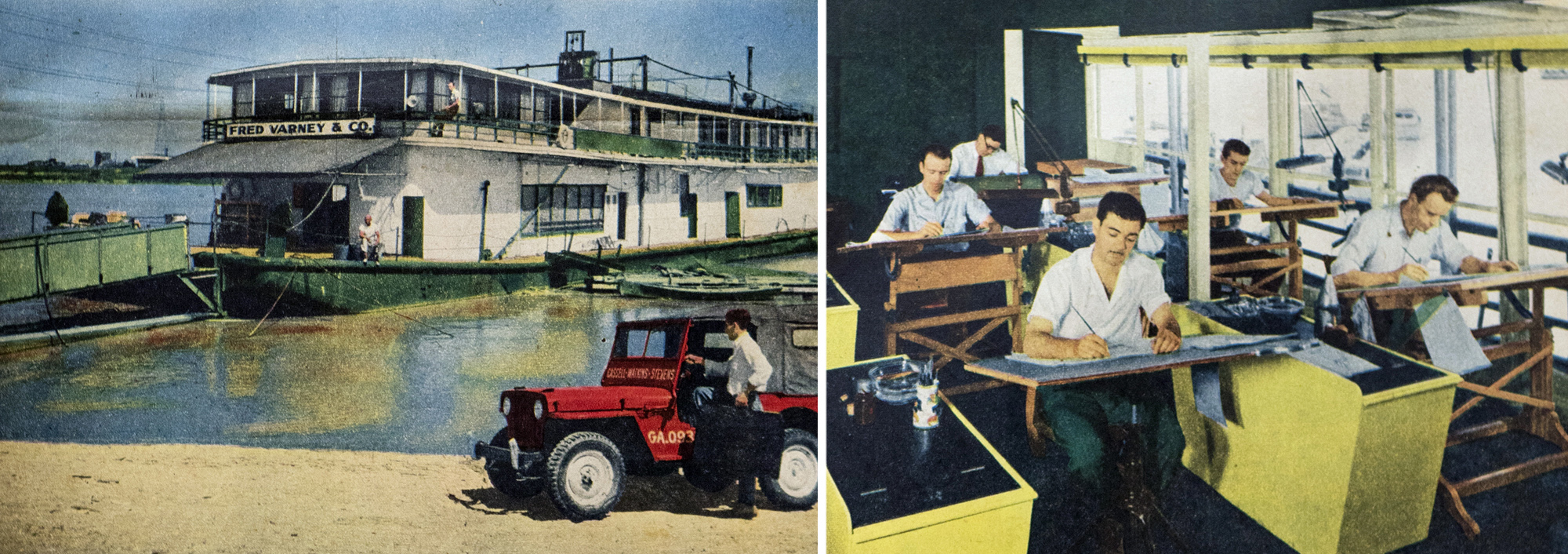
4. 1952–1956
By 1952, Obata was back on dry land with offices on the third floor of the newly remodeled Roosevelt Federal Savings and Loan at 825 Locust Street. In 1955, Kimio’s younger brother Gyo founded architecture firm, Hellmuth, Obata and Kassabaum (HOK), setting up shop in offices one floor below Obata and Associates.
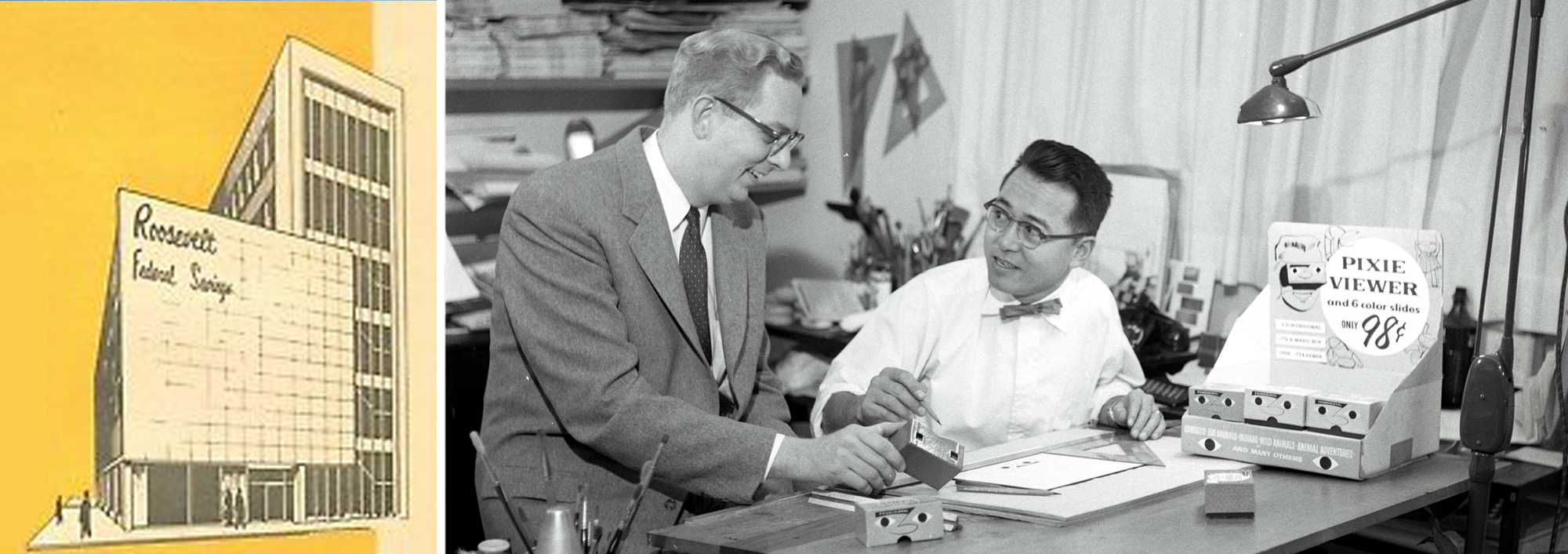
5. 1956–1958
In 1956, Obata relocated to the Delaney building at 315 N. Tenth Street, sharing space with the Charles F. Weleks & Co. dressmakers. The Delaney building was directly across the street from the Syndicate Trust building where Alice and Kimio got their start. The building had recently been remodeled by HOK for their new offices and brother Gyo convinced Kimio to follow them there.
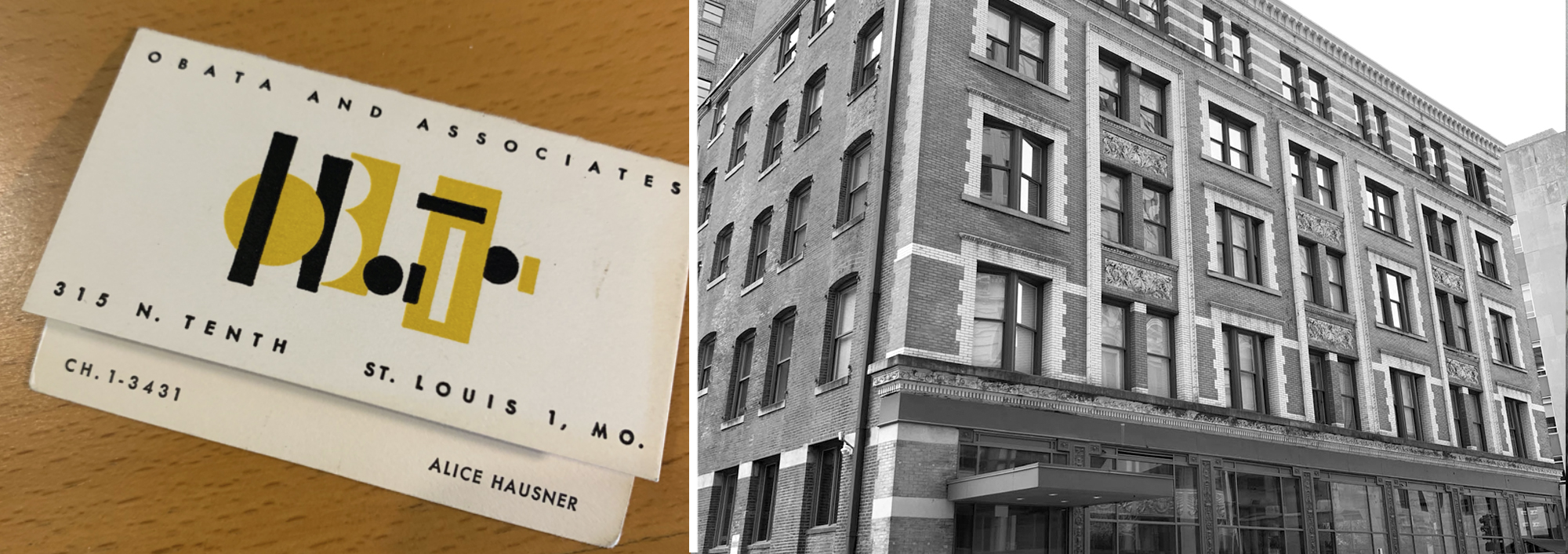
6. 1958–1960
By 1958, the nearby building built in 1875 was undergoing a complete interior and exterior modernization. Always attracted to modernism, Obata and Associates leased the second floor in the renamed Eleven Hundred Olive building. But by 1960, Obata was on the move once more, but only by a block. And this time, Obata was buying.
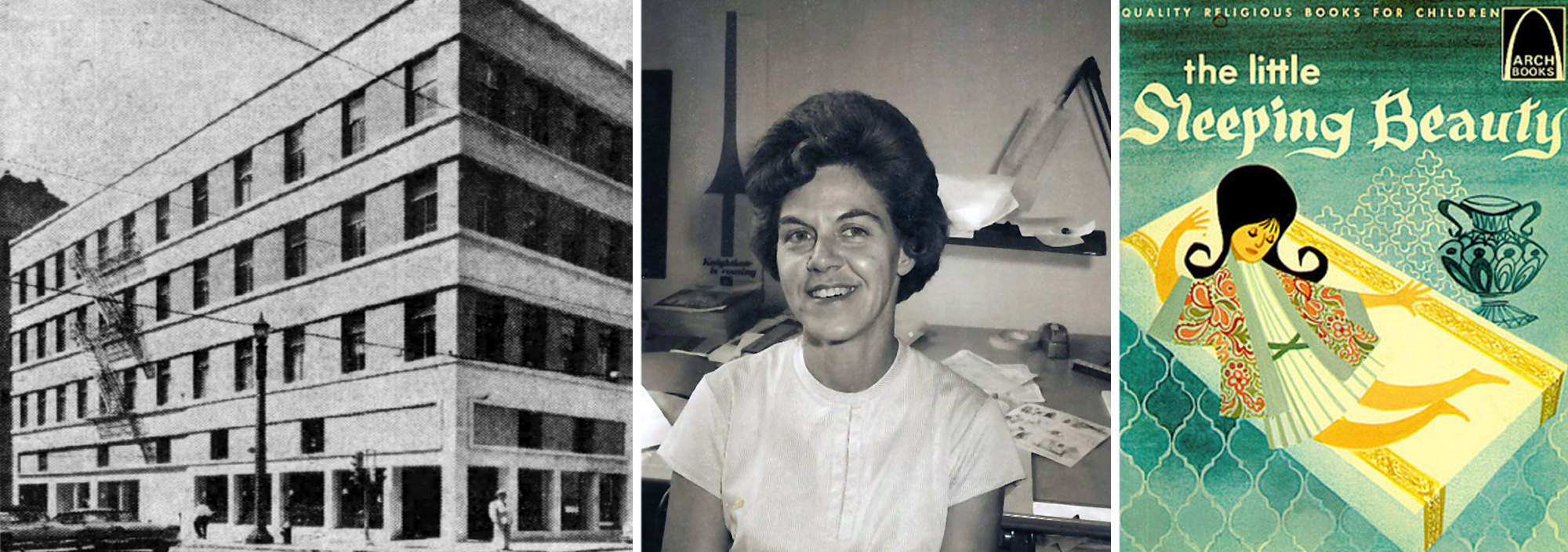
7. 1960–1982
In 1960, Obata purchased an unoccupied building at 1127 Pine Street that had been home to printers, lawyers, a coffee shop, a lunch counter, a stenographers school and a labor union. Obata occupied the second, third and fourth floors with art studios, in-house photography and Kimio’s import-export business. By 1963 the building was known as the “Design Center Building”. This time, Obata would stay put for twenty years.
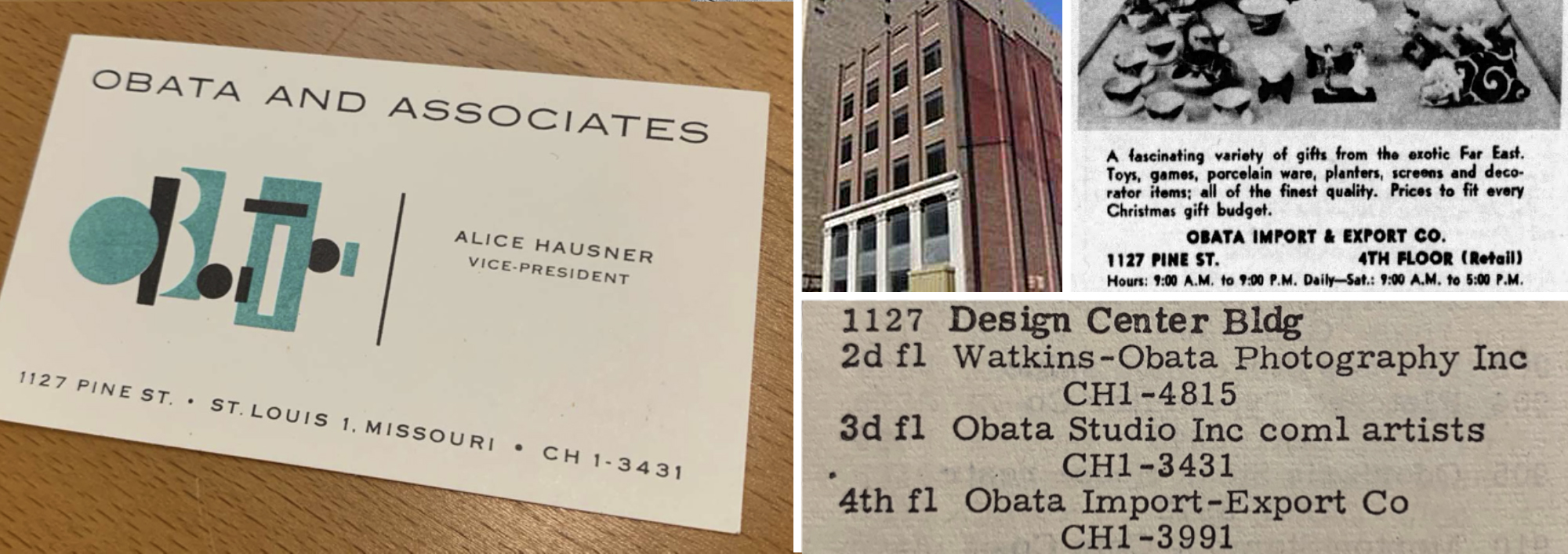
8. 1982–Today
In 1981, Obata purchased the abandoned Markham Memorial Presbyterian Church at 1610 Menard Street in the Soulard neighborhood and began a major restoration. The church, built in 1896, was within the LaSalle Park Redevelopment area administered by Ralston-Purina, a major Obata client at the time. Renovation work took over a year.
Obata was among the earliest of the Soulard area “urban pioneers” and was soon joined by several additional creative agencies and freelance artists doing work with nearby Anheuser-Busch. A 1990 Post-Dispatch article referred to the area as “designerville”.
Soulard today is a vibrant community filled with historic churches, red brick town homes, music clubs, unique restaurants and, of course, Soulard Market. As a nearly 40 year resident of the neighborhood, Obata is proud to call Soulard home.
